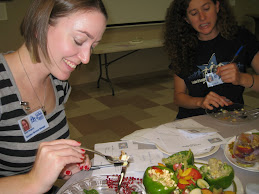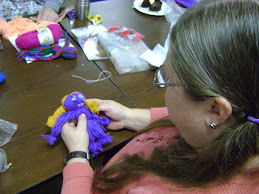As California’s drought continues, farmers and
gardeners are perhaps the most keenly aware of its repercussions. We work with
water every day, whether checking irrigation lines, watering newly planted
seeds or rinsing off fresh produce. I can tell you exactly how long I have been
able to shut the irrigation off in the Demonstration Garden this year – 10
days. That was after the two largest (maybe only) rain storms we have had in
winter and spring. I thought I could get away with not mulching a few beds because
temperatures would be cool, but with the lack of rain and summer-like days I
had to put in more work later to mulch around each little sprout.
I believe that this may be the new normal in
California but even if it’s not, gardeners and farmers should take some easy,
precautionary steps to conserve water. Even if the drought eventually ends,
conservation is still smart for your wallet if you have a water meter, or soon
will. A few cheap, simple steps to dramatically reduce your water usage and
increase your water use efficiency are:
1. Mulching! Use straw, dried leaves,
grass clippings, newspapers or almost anything that biodegrades to cover the
soil surface of your garden or yard. This mulch acts as an insulating layer
that protects plants from temperature fluctuations as well as reduces
evaporation significantly.
2. Drip Irrigation! Save yourself the time and heartbreak of hand watering each day and set up a drip irrigation system. There are many different kinds, including drip tape, soaker hose, and drip line that deliver water directly where you want it while decreasing water loss to evaporation. Think about investing in a hose timer so the system will go on automatically because who likes to come home from work and find that there tomato plant completely fried on the hottest day of the summer?
3. Water deeply. By watering deeply you encourage plant roots to grow down, where they can avoid the scorching hot soil surface and find more water that seeps lower into the soil. This will reduce the amount of water you use.
4. Intensive planting. Plant crops closer together so there is less area to water and their leaves shade the soil, thereby reducing evaporation. There are some great online guides and books that suggest the distances to space crops when planting bio-intensively.
Come check out the Demonstration Garden to learn
more about any of these technique. I’ll also be trying other inventive
water-saving measures, so stop by and see how they’re working!
Submitted by Kate Wilkins, Garden Coordinator at Sacramento Food Bank & Family Services.






No comments:
Post a Comment